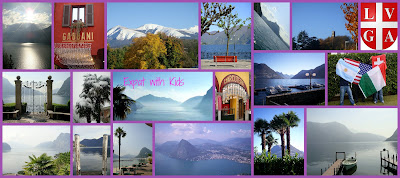Every once in a while I get carried away... the Sister March in Paris to the Women’s March on Washington D.C was definitely one of those moments. I am not a political person but this movement struck a cord in me, somewhere between the human rights and women's lib I found a cause I identified with. It was nothing to do with Donald Trump... this was bigger, it was about personal conviction and fundamental beliefs.
I invited Expat Girl to join me in the March which was to lead us from the Trocadero
Esplanade of human rights to the
Wall for Peace Monument on the Champ de Mars. Rather sheepishly she declined because she didn't feel safe to walk with such a big crowd of people. I respect that. The terrorist attacks had had an impact on her young life and there were things she was not prepared to do.
As I walk towards the terrace where the United Nations General Assembly adopted the Universal Declaration of Human Rights on December 10, 1948 I was surprised to hear only murmurs and relaxed conviviality. Usually during demonstrations you can hear shouts and chants a block away from the Trocadero.
Sure enough, as I came around the Musée de l'Homme - ten minutes before the March was suppose to begin - I saw a little crowd, women of all ages holding various signs and flags. Were the Parisiennes suitably late or was this just not on the city's agenda I thought a wee bit disappointed?
True to French style, however, people were late, and half an hour later thousands had turned up and it was impossible for the tourists to even attempt to get a picture of the Eiffel Tower from the Trocadero Esplanade.
With grace, dignity and conviviality women AND men from France, the USA, Mexico, Spain, New Zealand and many other places walked the walk side by side, each with their own belief and their own cause at heart. There was no aggressiveness, no arguments, no shouting or screaming. People were talking with their neighbours, smiling at one another, kids were asking each other where they were from in English, journalists were taking snapshots to capture the serene and peaceful mood of the colourful crowd blessed with sunshine and a wonderful and rare blue winter sky.
A unique and unforgettable afternoon in the French capital born of a solidarity movement with the Women’s March in the USA which will go down in history and in my memory as a very special moment of this complex, modern world.
As one of the signs said: "Maintenant, il ne faut plus se trumper!
Some say we were 7000 at Trocadero today!
A sign that sums it all up
Il faut du tout pour faire un monde
Best script board
The beauty of this march is that everybody can have their own agenda!
Recognise this Spanish sign?
Every person has their own personal reasons to participate
The French are part of the party as well!
An impressive view
Ready to march the March
The beauty of this sign is that it was carried by a man!
Arriving at the Wall of Peace with police escort
Greeting our sisters in Washington DC
A peaceful Saturday afternoon march comes to an end
The Wall of Peace, a favourite site of rendezvous for militants of human rights
Picture of the day: "Je suis une femme"






























